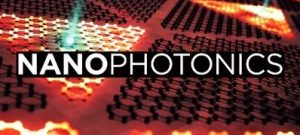
The Centre for Advanced Photonics and Process Analysis (CAPPA) was delighted to have its research recently published in the Nanophotonics Journal. CAPPA was featured for their recent paper on “High-Q asymmetrically cladded silicon nitride 1D photonic crystals cavities and hybrid external cavity lasers for sensing in air and liquids” and was written by several researchers including CAPPA researchers Simone Iadanza, Taynara Oliveira, Liam O’ Faolain and previous CAPPA member Sharon Butler. Nanophotonics has an impact factor of 7.923.
Nanophotonics covers recent international research results, specific developments in the field and novel applications and is published in partnership with Sciencewise. It belongs to the top journals in the field. Nanophotonics focuses on the interaction of photons with nano-structures, such as carbon nano-tubes, nano metal particles, nano crystals, semiconductor nano dots, photonic crystals, tissue and DNA. The journal covers the latest developments for physicists, engineers and material scientists, working in a variety of fields.
In the paper they show a novel design of high Q-factor silicon nitride (SiN) 1D photonic crystal (PhC) cavities side-coupled to curved waveguides, operating with both silica and air cladding. The engineering of the etched 1D PhC cavity sidewalls angle allows for high Q-factors over a wide range of upper cladding compositions, and the achievement of the highest calculated Q-factor for non-suspended asymmetric SiN PhC structures. We show the employment of these SiN PhC cavities in hybrid external cavity laser (HECL) configuration, with mode-hop free single mode laser operation over a broad range of injected currents (from 25 mA to 65 mA), milliwatts of power output (up to 9 mW) and side-mode suppression ratios in the range of 40 dB. We demonstrate the operation of these devices as compact and energy efficient optical sensors that respond to refractive index changes in the surrounding medium the measurement of sodium chloride (from 0% to 25%) and sucrose (from 0% to 25%) in aqueous solution. In HECL configuration, the RI sensor exhibits a 2 orders of magnitude improvement in detection limit compared to the passive microcavity. We also discuss the possibility for applying these devices as novel transducers for refractive index changes that are induced by analyte specific absorption of infrared radiation by the target analytes present in gas or liquid phase.
You can learn read the full paper here and more about the recent research and publications at CAPPA here.


